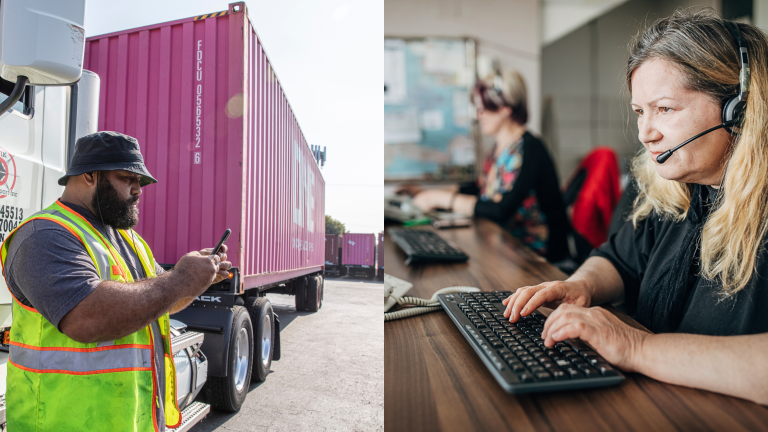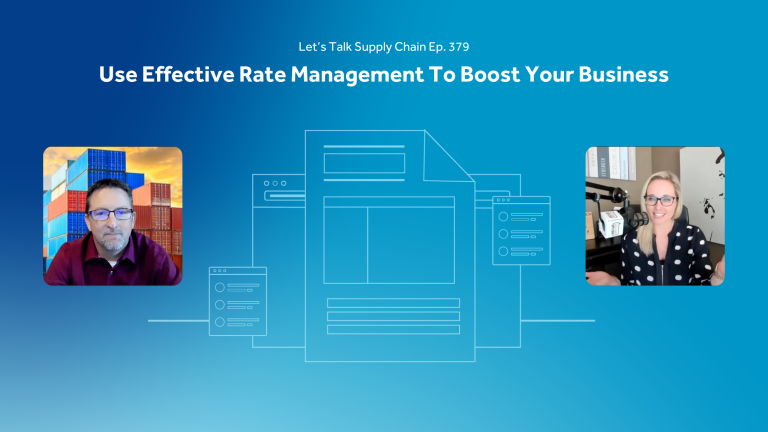Are you in a stalemate with your current system, trying to grow but unable to move the needle?
Whether your system is a robust network of excel spreadsheets, organized chaos of paper documentation, or an outdated Transportation Management System (TMS): if the following signs are apparent in your company, it is time for a new TMS.
You’re Struggling to Provide an Excellent Customer Experience
Is your team doing everything in their power to prioritize customer service, only to have customers calling in disappointed and frustrated? Are you seeing customer relationships wavering?
If you’re doing everything you can, but still failing to meet your customer’s expectations, the trust you used to have is quickly fading.
You know as well as we do that your customers are the lifeblood of your company. The loyalty of existing customers and the business of new customers all depend on your ability to provide a customer experience that isn’t only adequate, but excellent.
If your ability to fulfill your customer’s needs is wearing thin as your business grows, that is a critical sign that your current system is failing you. It’s time to invest in a new TMS as soon as possible.
How a TMS helps
Using a unified system to run your back office allows you to quickly answer important questions about orders without searching through stacks of paper or hoping your Excel sheet has things typed in properly. Manage customer relationships, orders, dispatches, and invoicing all in one place.
You’re Lacking Visibility
When you’re a company in the middle of a critical supply chain, every moving part matters. If you’re finding it hard to see the full picture of your operations, the likelihood of critical pieces slipping through the cracks becomes dangerously high.
So, can you confidently say where every driver, every load, and every document is located? If it’s not a resounding yes, then moving to a centralized cloud based TMS is a great solution for you.
You’re in a Constant Struggle Against the Clock
Are these 5 time-sucking activities plaguing your business?
- Constantly responding to questions from customers
- Digging through rate histories
- Searching for late or lost proofs of delivery
- Duplicate data entry
- Waiting for load confirmations
If it feels like there are never enough hours in the day to do all that needs to be done, it’s time to start automating manual tasks that you shouldn’t be doing yourself.
Let your team get back to running your business. Let a TMS take care of the little things.
Your Team’s Processes Seem Disjointed
Does executing daily operations require jumping between spreadsheets, websites, software, papers, phone calls, emails, WhatsApp, texts, and files? Are your employees struggling to stay on the same page as one another?
When each step of your operation depends on a different tool, it doesn’t matter how perfect each tool may be on its own, if it gets in the way of completing tasks seamlessly.
It may feel like “we’ve always done it this way”, but as the supply chain changes, so must your operations. Fast, streamlined, and organized. That’s how your team will feel once you have a TMS connecting all the dots.
You’ve Grown! (and that’s great!)
Your company has grown beyond yourself and a trusted partner or two. The dream you started your company with is coming true.
Maybe you have three or four back-office employees with different responsibilities, and five drivers out on the road. Maybe you have 20 customers relying on you to transport their critical shipments in time. Maybe you’re starting to move 30 loads a week.
Whatever that growth looks like, you finally feel like you’re running a successful business.
For 20 years we’ve been working with growing freight businesses. Over that time, we’ve observed that there is a general threshold for when managing a business without a TMS becomes extremely difficult.
For trucking companies, it is usually around the 4-5 truck range. That’s when visibility, the ability to communicate, and back-office organization start flying out the window. For freight brokerages, being pushed to the limit can feel different for each firm, but you’ll know when you’ve maxed out your capacity. For Hybrid companies, it’s at the start of operations with a second authority or division.
This isn’t true of every company, and it’s not to say that a TMS is required to grow beyond these thresholds. Rather, the complexity of management begins to increase exponentially, which is accompanied by greater uncertainty, risk, and strain on resources and people supporting the business.
You Plan to Grow More (and need help to do so)
To put it simply, the capacity of your business depends on your team’s capacity to execute their jobs. If your employees are currently maxed out with the work it takes to operate your business, there are only two ways you can start taking on new business.
- Hiring more employees to take on new work.
- If every task requires a human touch, your growth is limited to the capacity of the people on your team. That means if you double the number of orders, you need to double the size of your staff to successfully complete them.
- Increasing your current employee’s capacity to handle the new business by automating time-consuming processes and manual tasks with a TMS.
The second option offers you the ability to experience sublinear growth.
Our team at Tailwind and Envase swear by this concept. It’s the reason we’ve been able to achieve continued growth year over year. We automate the “busy work” so we can have our most valuable resources (our great people!) spend their time working with companies like yours to help you get set up for growth.
Ready For the Next Step?
Prepare for your TMS search with an interactive TMS comparison guide. Evaluate options, ask the right questions, find the right fit for your business.




